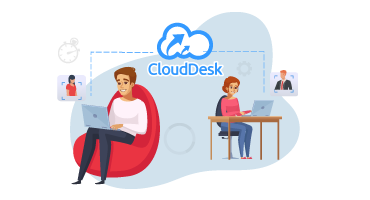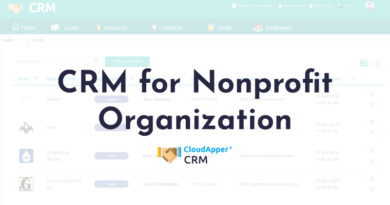Benefits of Having a Distributed Workforce and How to Manage It

Businesses throughout the world are constantly changing strategies in order to gain competitive advantages over one another. One of the techniques that some businesses have started applying is a distributed workforce. This has especially gained momentum due to the availability of state-of-the-art telecommunication technologies and location independence, which have become a more common way of getting things done today. So, in this article, we will try to understand what a distributed workforce is, why it can work for you, and how to make it work.
What is a distributed workforce?
The term “distributed workforce” normally refers to a team of professionals that are geographically distributed over large areas and make the best use of state-of-the-art technology in order to improve productivity and profitability over the traditional working model.
As you can see, unlike a virtual business, a distributed workforce uses various telecommunication networks and tools to establish connectivity and share all the essential organizational resources, including email, data, applications, and others that are available within the restriction of the traditional office environment.
Benefits of a distributed workforce

Deploying a distributed workforce not only brings in the best talent from all around the globe, but it can also make your workforce more efficient and positively impact every other aspect of your business. Here are the top five benefits of having a distributed workforce:
1. Hire Beyond Geographic Boundaries
With a distributed workforce, you can go beyond any geographical boundaries to find and hire the most talented and skilled people to meet your organizational requirements. It’s proven that a geographically diverse workforce leads to higher problem-solving ability and innovation.
2. Build a Team with the Talent You Want
With fixed geographic boundaries, it can be difficult to fulfill all the skill gaps in your organization, especially in the IT industry where the new jobs are growing very rapidly. So, if training and upskilling your current employees is not an option for you, keeping a distributed collection of human resources can be a very innovative and effective option.
3. Better Coverage
A distributed workforce does not only mean they are geographically spread around the world, they also represent different races, cultures, and time zones. These factors can be really advantageous for a company looking for local presence in that locality. Also, since they are in different time zones, they can practically provide service 24 hours a day.
4. Work-Life Balance
A distributed workforce model allows you to work with a flexible working schedule and saves a lot of time in unnecessary transportation delays. Employees can use that time to spend with their friends and families. It helps them achieve a better work-life balance, which increases their motivation and productivity level.
5. Increased Productivity
According to a recent study, almost 53% of remote employees admitted that they are interested in working overtime when they are working remotely. It also states that:
- 45% of remote employees believe they can work smarter (deliver much more with fewer resources)
- 44% of them say they encounter fewer disruptions at home
- 99% of managers say their employees who are given flexible work options are more productive
With the right office tools and accessories, companies can save many resources as well as increase productivity. Also, since they are more motivated, they can get more work done within a very short period of time and are always prepared to go the extra mile for the organization.
How to manage your distributed workforce?

With a distributed workforce, managing them to stay productive and focused is really important to bring significant results for the company. There are many ways to ensure effective remote workforce management. Here are some of them:
Establish an easy and transparent way of communication
Nothing is more important to remote team communication and collaboration than the team’s digital tools. Without the ability to have live, in-person interactions, employees can easily fall victim to “out of sight, out of mind.” Thus, it’s crucial to create a Digital Toolbox that provides multiple ways of both communication and collaboration.
Some of the most popular remote work tools that allow for seamless video conferencing, instant messaging, meeting scheduling, and document collaboration include Slack, Mattermost, Zoom, Google Calendar, and Google Drive.
Keep your distributed workforce engaged
Employees need motivation when they work from home. They might feel lonely and get frustrated from time to time, as they are staying home by themselves. Management needs to ensure the employees are maintaining a positive mentality and keeping good health for proper job engagement and productivity. To help in this cause, CircleCare employee engagement app is working with many businesses. It encourages employees to engage with each other and helps them to achieve health goals and stay healthy.
Monitor their productivity
Thanks to technology like remote employee time tracking and monitoring software, you can manage remote employees with ease. But if you want to get the most return from your investment, then you must invest in CloudDesk. It is the best software for employee monitoring out there for establishing accountability as well as letting your employees know that their every effort is being recorded. This software has features like time tracking, screenshot capture, Biometric ID verification, PC activity monitoring, idle time tracking, and more that will make your remote management easy and efficient.
In the end
While many people still do not agree with the fact that the distributed workforce model benefits companies in many ways, plenty of credible studies that we have cited here suggest otherwise. If your employees have access to all the right office tools, accessories, and resources, it guarantees you increased productivity, better health, reduced turnover, and much more. Many forward-thinking organizations have already realized this, are you one of them too?












